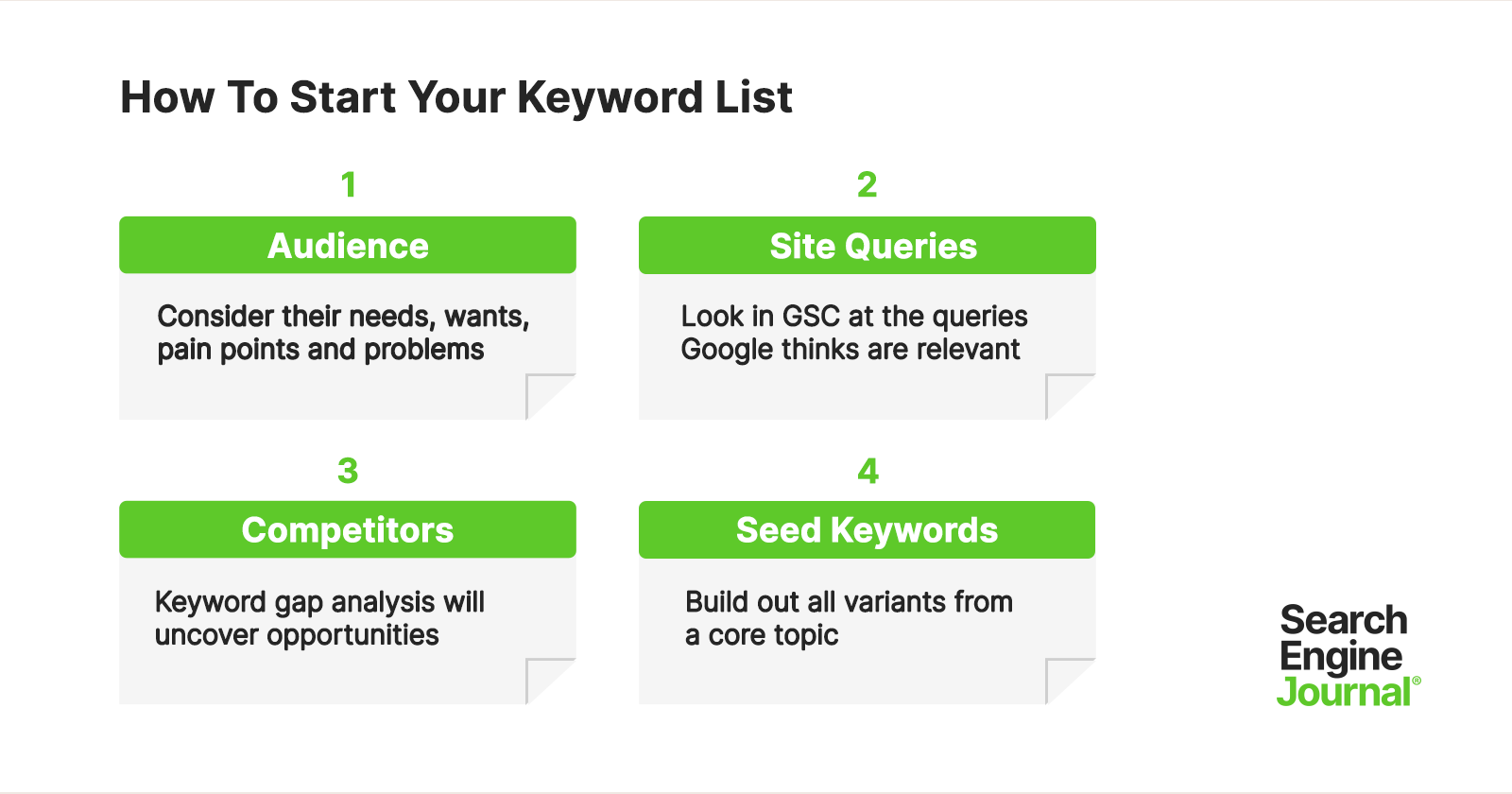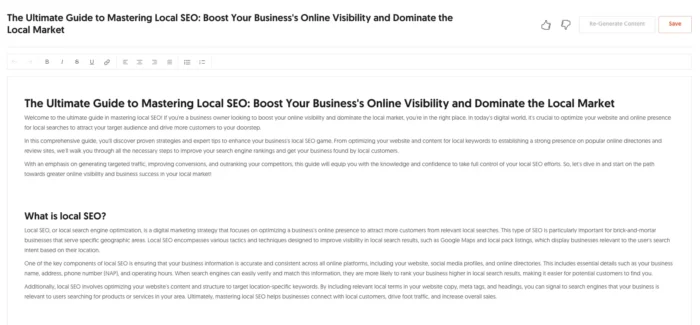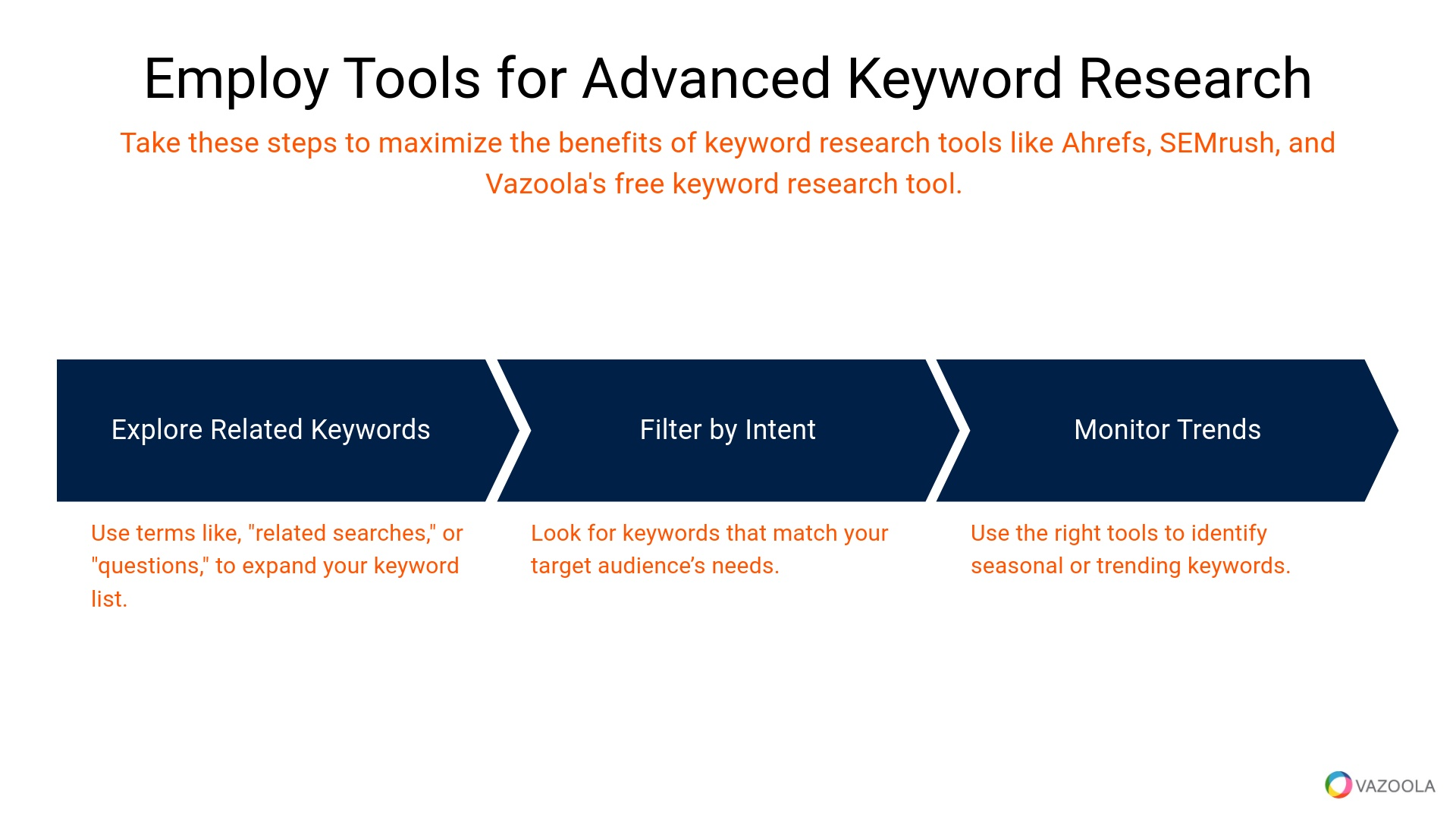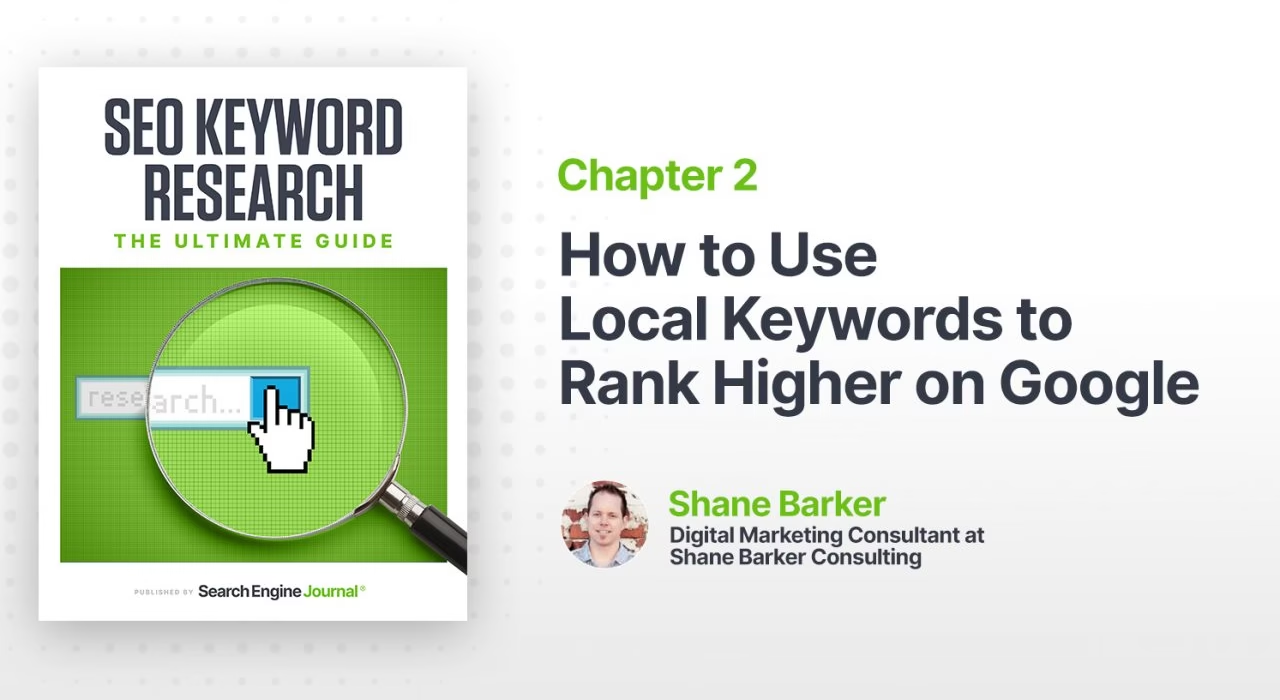“`html
Introduction: Understanding the Cornerstone of SEO – Keyword Research
Estimated reading time: 12 minutes
Key Takeaways
- Keyword research is the fundamental process of identifying the terms your audience uses to search online. (Source, Source, Source)
- Effective keyword research goes beyond simple word discovery; it’s about understanding user intent and fulfilling their needs.
- This practice forms the bedrock of a strong SEO strategy, making content discoverable and relevant.
- Mastering how to do keyword research is key to driving organic traffic and achieving SEO success.
Table of Contents
- Introduction: Understanding the Cornerstone of SEO – Keyword Research
- Key Takeaways
- The Crucial Role of Search Intent in Keyword Research
- A Step-by-Step Guide: How to Do Keyword Research Like a Pro
- Phase 1: Idea Generation – Brainstorming Seed Keywords
- Phase 2: Expansion and Discovery – Utilizing Keyword Research Tools
- Phase 3: Evaluation – Analyzing Keyword Metrics
- Phase 4: Refinement – Identifying Long-Tail Keywords and Competitor Insights
- From Keywords to Content: Developing Your SEO Keyword Strategy
- Practical Techniques to Find Keywords for Your Blog
- Avoiding Common Mistakes in Your Keyword Research
- Conclusion: Unlocking Blog Growth Through Strategic Keyword Research
- Frequently Asked Questions
In the ever-evolving digital landscape, standing out and connecting with your target audience is paramount for any online endeavor, especially for blogs. At the heart of this connection lies a powerful, yet often underestimated, process: **keyword research**. It’s not merely about finding popular search terms; it’s about understanding the very language your potential readers use when they seek information, solutions, or products. This foundational practice is the cornerstone of effective Search Engine Optimization (SEO), acting as the compass that guides your content creation and ensures it reaches the right eyes.

Think of **keyword research** as stepping into your audience’s shoes. What questions do they ask? What problems are they trying to solve? What are they typing into Google? By answering these questions, you unlock the ability to create content that resonates deeply, captures attention, and ultimately drives valuable organic traffic to your blog. It’s the bedrock upon which a robust **SEO keyword strategy** is built, transforming a blog from a mere collection of posts into a discoverable and authoritative resource.

This guide is designed to demystify the process. We’ll walk you through exactly **how to do keyword research** effectively, equipping you with the knowledge and tools to identify the most impactful keywords that will propel your blog’s visibility and help you achieve your SEO goals. Let’s dive in and unlock the power of strategic keyword discovery.
The Crucial Role of Search Intent in Keyword Research
Understanding your audience’s search behavior is incomplete without grasping the concept of **search intent**. This refers to the *why* behind a search query – what the user is ultimately trying to achieve by typing those words into a search engine.
There are four primary types of **search intent**:
- Informational: Users are looking for answers to questions, facts, or general knowledge. Examples include “how to bake a cake” or “what is keyword research.” (Source, Source)
- Navigational: Users are trying to find a specific website or page. Examples include “Facebook login” or “Amazon homepage.”
- Transactional: Users are ready to make a purchase. Examples include “buy iPhone 15” or “discount code for Nike shoes.”
- Commercial Investigation: Users are researching products or services before making a purchase. They might be comparing options or looking for reviews. Examples include “best running shoes for marathon” or “SEMrush vs Ahrefs.”

*Why* is matching your content to the user’s **search intent** so critical? Because search engines like Google are designed to provide the most relevant and satisfying results. If your content aligns with the user’s intent, you’re more likely to satisfy their query. This leads to better engagement metrics – longer time on page, lower bounce rates, and higher click-through rates – all signals to Google that your content is valuable. Consequently, this translates into higher search engine rankings. (Source)
For content creators, especially bloggers focusing on informational content, understanding that users with **informational search intent** are seeking answers is key. Your goal then becomes identifying the questions they are asking and providing clear, comprehensive, and valuable answers.
A Step-by-Step Guide: How to Do Keyword Research Like a Pro
Now that we understand the importance of keyword research and search intent, let’s break down the process into actionable steps.
Phase 1: Idea Generation – Brainstorming Seed Keywords
Every great keyword strategy begins with a solid foundation of ideas. This phase is about uncovering the broad, overarching topics – your “seed keywords” – that are relevant to your niche, business, or blog. Think about the core subjects your target audience is interested in, the problems your content aims to solve, or the products and services you offer.
How can you brainstorm effectively?
- Consider your products/services: What do you sell or offer? What are the general categories?
- Think about common customer questions: What do people frequently ask your sales or support teams? These are goldmines for informational keywords.
- Industry-specific jargon: What terms do experts and enthusiasts in your field use?
- Explore related resources: Browse Wikipedia for your main topics and look at the categories and related articles. Visit industry forums, read competitor blogs, and even tap into discussions on platforms like Reddit or Quora.
(Source)

The goal here is quantity and breadth. Don’t filter too much at this stage; just generate as many relevant seed keyword ideas as possible. These initial ideas will be the starting point for more in-depth analysis.
Phase 2: Expansion and Discovery – Utilizing Keyword Research Tools
Once you have a list of seed keywords, it’s time to expand upon them and discover data-driven keyword opportunities. This is where **keyword analysis tools** become indispensable. They help you move beyond your initial ideas and uncover a wealth of related terms, variations, and questions that people are actually searching for.
(Source, Source, Source, Source)
There’s a diverse range of tools available, catering to different needs and budgets:
- Free Tools:
- Google Keyword Planner: Excellent for understanding search volume and competition for keywords relevant to Google Ads, but also provides great keyword ideas.
- Google Trends: Helps you understand the popularity of search terms over time and identify trending topics.
- Google Search Console: Shows you the actual queries users typed into Google to find your site (once it’s live and has some traffic), providing invaluable insights into what’s already working.
- Paid Comprehensive Suites:
- SEMrush: A powerful all-in-one SEO tool with robust keyword research features.
- Ahrefs: Known for its extensive backlink index and excellent keyword explorer.
- Moz Keyword Explorer: Offers a good balance of features for keyword research and analysis.
(Source, Source, Source, Source)

These tools are designed to help you **find keywords for your blog** by suggesting related terms, identifying variations you might not have thought of, and surfacing the actual questions people are posing to search engines. (Source, Source) Input your seed keywords into these tools and explore the suggestions. Look for variations, synonyms, and questions that your target audience might be asking.
Phase 3: Evaluation – Analyzing Keyword Metrics
With an expanded list of potential keywords, the next crucial step is to evaluate them based on key metrics. This helps you prioritize and select keywords that offer the best potential for your blog.
Key metrics to analyze include:
- Search Volume: This indicates how many times, on average, a keyword is searched for per month. A higher search volume suggests more people are looking for this term. However, you need to strike a balance; extremely high volumes often mean intense competition.
- Keyword Difficulty (KD) / Competition: This metric estimates how hard it will be to rank on the first page of Google for a particular keyword. It’s usually calculated based on the strength of the websites already ranking. Lower difficulty is generally better, especially for newer blogs or those with less domain authority. (Source, Source, Source)
- CPC (Cost Per Click): While primarily an advertising metric (what advertisers pay per click for this keyword), a higher CPC can be a strong indicator of commercial intent and the perceived value of the keyword. If advertisers are willing to pay more, it suggests people searching for this term are often looking to buy. (Source, Source)

Interpreting these metrics is vital. You’re looking for keywords that have a decent search volume (enough to generate traffic) but are not impossibly difficult to rank for. Consider your blog’s authority and resources. For a new blog, focusing on keywords with moderate search volume and lower difficulty might be a more strategic approach than going after head terms with millions of searches and extreme competition.
Phase 4: Refinement – Identifying Long-Tail Keywords and Competitor Insights
To truly refine your keyword strategy, it’s essential to look at **long-tail keywords** and gain insights from your competitors.
**Long-tail keywords** are phrases that are longer, more specific, and typically have lower search volume. However, they often come with higher conversion rates and significantly lower competition. (Source, Source)
For example, while “keyword research” is a broad term, “how to do keyword research for blog posts on a budget” is a long-tail variation. These more specific phrases indicate a clearer intent and are often easier to rank for. They are invaluable for new blogs or for creating highly targeted content that addresses very specific user needs.

Additionally, analyzing your competitors can reveal untapped opportunities. Use your **keyword analysis tools** to see what terms your competitors are ranking for. Look at their website structure, the keywords they use in their page titles, headings, and content. (Source, Source, Source) This competitive analysis helps you identify content gaps where you can potentially outrank them or discover keywords they might be overlooking.
From Keywords to Content: Developing Your SEO Keyword Strategy
Successful **keyword research** isn’t a one-off task; it’s the dynamic foundation for an ongoing **SEO keyword strategy**. The insights gained from research should directly inform your content creation and optimization efforts.
A sophisticated strategy often involves **keyword clustering**. This means grouping semantically related keywords together. You can then create comprehensive cornerstone content, often called “pillar pages,” that broadly covers a topic, supported by more specific sub-topic pages that target the clustered keywords. This topical authority approach signals to search engines that you are a comprehensive resource on a subject.
(Source)

Crucially, you need to **map keywords to specific content**. Assign primary and secondary keywords to each individual blog post or page. This ensures that every piece of content you publish has a clear target – a specific user intent and a set of search queries you aim to rank for. Avoid stuffing keywords; instead, naturally integrate them where they make sense and provide value to the reader.
Furthermore, an effective **SEO keyword strategy** is not static. It requires continuous monitoring and adaptation. Regularly use your **keyword analysis tools** to track the performance of your target keywords, identify emerging trends, and discover new opportunities. This ongoing refinement ensures your content remains relevant and competitive in the long term. (Source, Source)
Practical Techniques to Find Keywords for Your Blog
Beyond the dedicated tools, there are several practical, accessible techniques to uncover valuable keywords for your blog:
- Leverage Google’s Built-in Features: Pay close attention to Google’s own suggestions. The “People Also Ask” (PAA) boxes in search results offer a goldmine of related questions people are asking. Similarly, the “Related Searches” listed at the bottom of the search results page provide excellent keyword variations and ideas. (Source)
- Mine Online Communities: Dive into where your target audience hangs out online. Relevant forums (like Reddit subreddits specific to your niche), Q&A sites (such as Quora), and even social media discussions can reveal the exact language, pain points, and questions your audience uses. Don’t just observe; participate and learn. (Source, Source)
- Revisit and Expand: Treat your keyword list as a living document. Your understanding of your audience will grow, and search trends will evolve. Regularly revisit your keyword research, look for new opportunities, and expand your list accordingly. This iterative process is key to sustained SEO success. (Source)

Avoiding Common Mistakes in Your Keyword Research
Even with the best intentions, it’s easy to fall into common traps when conducting keyword research. Being aware of these pitfalls can save you a lot of wasted effort.
- The Over-reliance on High Volume: A common mistake is chasing keywords with massive search volumes. While tempting, these terms are almost always highly competitive and incredibly difficult to rank for, especially for new or smaller blogs. Focus on achievable wins first. (Source, Source)
- Ignoring Search Intent: Choosing keywords without understanding the *why* behind them is a recipe for irrelevant traffic. If someone searching for “how to fix a leaky faucet” lands on a page selling plumbing services, they’ll likely bounce immediately. This signals poor user experience to search engines. (Source)
- Neglecting Competitor Analysis: Failing to look at what your competitors are doing is a missed opportunity. You might be spending time and resources targeting keywords they already dominate, or you might be missing out on valuable, less competitive terms they haven’t focused on. Understanding the competitive landscape is crucial. (Source, Source)

Conclusion: Unlocking Blog Growth Through Strategic Keyword Research
In conclusion, **keyword research** is not just a preliminary step; it is the fundamental pillar upon which effective SEO and sustainable blog growth are built. By diligently identifying the terms and phrases your target audience uses, you gain the power to create content that is not only discoverable but also highly relevant and valuable to those seeking it.

A well-executed **SEO keyword strategy** is a continuous journey, not a destination. It requires ongoing monitoring, adaptation to evolving search trends, and a commitment to understanding and serving your audience’s evolving needs. The insights gleaned from **keyword analysis tools** and direct audience observation are your guideposts for this ongoing refinement. (Source, Source)
Armed with the techniques and understanding from this guide, you are now well-equipped to confidently **find keywords for blog** posts that will drive targeted organic traffic. Embrace the process, be persistent, and begin implementing these steps today. Watch as your blog’s visibility, reach, and authority grow, bringing you closer to achieving your online goals.

Frequently Asked Questions
-
Q1: How often should I update my keyword research?
A1: It’s recommended to revisit and update your keyword research at least quarterly, or more frequently if you notice significant shifts in search trends, your niche, or your competitors’ strategies.
-
Q2: What is the difference between short-tail and long-tail keywords?
A2: Short-tail keywords are typically 1-2 words (e.g., “SEO”) and have high search volume but high competition. Long-tail keywords are longer, more specific phrases (e.g., “how to improve SEO for a new blog”) with lower search volume but higher conversion rates and lower competition.
-
Q3: Can I use Google Keyword Planner for free?
A3: Yes, Google Keyword Planner is a free tool within Google Ads. You’ll need a Google Ads account, but you don’t need to run active campaigns to use its basic keyword research features, though having a campaign can provide more precise data.
-
Q4: How do I know if a keyword has good “search intent”?
A4: Analyze the search results page for the keyword. If the top results are blog posts answering questions, it’s informational intent. If they are product pages, it’s transactional. If they are forums or comparison sites, it’s commercial investigation. Your content should match the dominant intent shown in the search results.
-
Q5: Is it possible to rank for very competitive keywords?
A5: It is possible, but extremely challenging and time-consuming, especially for new websites. It requires significant authority, high-quality content, and a robust backlink profile. For most blogs, it’s more strategic to start with less competitive, long-tail keywords and build up.
“`






